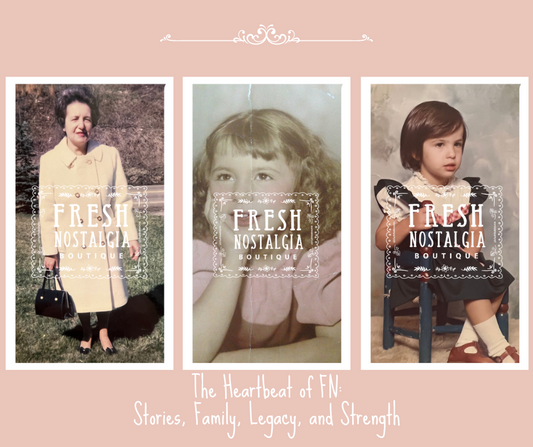As with so many topics in this world, everyone has their thoughts on fashion. Some simply cannot be bothered with it, then there are those who are consumed by it, and there are plenty of others who are everywhere in between. Either way, it can't be denied that everyone wears clothing of some sort, and therefore, we all have some relationship with "fashion."
Whether you are one who avoids all things fashion or one who follows all the latest trends, I think you'll find the following anecdotes interesting in some regard.
The Very First Fashion Designer

This title belongs to little-known Charles Frederick Worth, who, beginning in 1858, was the first fashion designer to have his labels sewn into the the garments he created. Worth dominated Parisian fashion in the latter half of the nineteenth century.
Although born in England, Worth's label, The House of Worth, was founded in France in 1858 and embodied high fashion specializing in haute couture, ready-to-wear clothing, and perfumes. The House of Worth continued to operate until 1952 and closed in 1956. The House of Worth brand was revived in 1999 by two entrepreneurs, but failed to compete successfully in the world of haute couture.
Who Invented The Mini Skirt?

This a long-debated topic in the fashion industry, but the most often credited is London-based designer Mary Quant.
Quant opened what became the iconic boutique Bazaar in 1955, in London's Chelsea neighborhood. I confess I chose this fact because I was fascinated that Mary's favorite car was the Mini Cooper, and rumors swirl that she used this as inspiration for the naming the ever popular "mini skirt."
The truth is, however, the mini skirt design was a slowly evolving process. Early signs of shorter hemlines began to appear in the late 1950s in tandem with rock and roll music and youth dance crazes. Quant was attuned to this trend, starting to sport shorter hemlines years earlier, in the mid 1950s.
So, if anyone should be credited with pioneering the mini skirt, it is Mary Quant. Inspired by the fashions she saw on the streets, Quant continued to raise the hemline of her skirts, and by 1964, to several inches above the knee. As a result, the iconic mini skirt has been alive and well in fashion ever since!
Levi Strauss & Co Created The First Fashion Logo

Many people like to credit the Lacoste alligator, which was designed in 1933, as being the very first designer logo. But I would argue that Levi Strauss & Co. would be considered "designer" - both in 1837, when the company was born, as well as today.
The company first used their logo depicting two horses in 1886 as a way to grow their market share before its patent on the jean-making market share expired. I bet they never expected their logo to become so recognizable that early customers would ask for the "jeans with two horses". This led Levi Strauss & Co. to briefly rename their product "The Two Horses Brand" until 1928, when they officially trademarked the Levi Strauss name.
One last Levi's fun fact: the first pair sold for $6 worth of gold dust back in 1853.
What's The History Of Miniature Mannequins?

Have you ever seen the miniature wooden mannequins and wondered why one would want to showcase fashion on a smaller scale than actual human form? There's actually quite an interesting historical background on this.
The idea for miniature fashion was developed in post-World War II Paris. The fashion industry in Paris was greatly affected by the war.
After Paris was liberated, the idea for a miniature Théâtre de la Mode (Theatre of Fashion) came from Robert Ricci, son of couturier Nina Ricci. Since all materials were in short supply at the end of World War II, Ricci proposed using miniature mannequins, or "fashion dolls," to address the need to conserve textiles, leather, fur, and other materials. The mannequins were 27.5 inches tall and fabricated of wire.
Théâtre de la Mode became a touring exhibit in March of 1945, opening at the Louvre in Paris. Because of its popularity, the tour expanded throughout Europe, and followed in the United States, with displays in New York City and San Francisco by 1946. The exhibit is now part of the permanent collections of the Maryhill Museum of Art in Washington state.
Take a look above at FN's very own Théâtre de la Mode (Pittsburgh style) from our holiday window display by local artist Suzanne Mauro. We love how Suzanne used the nostalgic Kaufmann's clock as the backdrop of our miniature mannequin scene.
Why Do Men's & Women's Clothing Button On Opposite Sides?

During historical periods such as the Renaissance and Victorian eras, women's clothing was much more elaborate than men's clothing. Just picture it - petticoats, bloomers, bustles, corsets, and bustles, to name a few. The wealthier classes of women were lucky enough to have servants to help them get dressed. And who did the couturiers design clothing for? The wealthy, of course. Clothiers soon realized that by reversing the buttons on women's clothing, placing them on the left side, the job would be made easier for all involved in the lengthy dressing process. Eventually, as clothing became more and more mass-produced, women’s clothing continued to be made with the buttons of the left, and the design became standard as it still remains today.
This is just a tiny sampling of fashion facts that I hope you've enjoyed and have become inspired to dig into some more. There are plenty more to explore, and as you can probably see, fashion has played a major role in so many historical events. Leave us a comment and share your favorite fashion fact - it may be one we have never heard!



